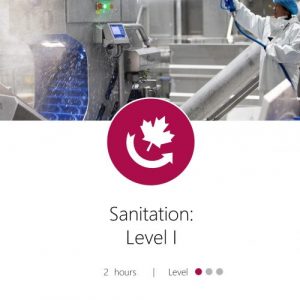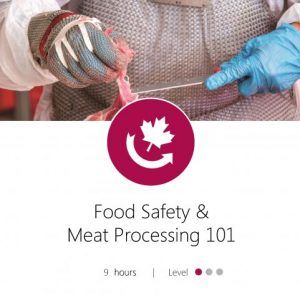Introduction to HACCP Principles: Building a Strong Foundation!
$399.00
In this course, we will embark on a journey to understand and master the principles of the Hazard Analysis Critical Control Point (HACCP) system. Designed in alignment with Codex Alimentarius guidelines, this course serves as your gateway to the world of food safety management systems.
Available!
Return to StoreIn this course, we will embark on a journey to understand and master the principles of the Hazard Analysis Critical Control Point (HACCP) system. Designed in alignment with Codex Alimentarius guidelines, this course serves as your gateway to the world of food safety management systems.
Learning Objectives:
Once you have completed the course, you should be able to:
- Define key HACCP terms
- Describe the history of HACCP
- Recognize the benefits of HACCP
- Describe the role of management in a HACCP system
- List the prerequisites to HACCP training
- Identify the 12 crucial steps for successful HACCP implementation
- Describe the scope and responsibilities of the HACCP team.
- Understand and explain the importance of each step of HACCP
- Describe what must be included in a product description.
- Describe questions the HACCP team should ask before filling out HACCP Forms, and identify their contents and correct structure
- Describe the process of hazard identification in the food industry.
- Navigate CFIA’s Reference Database for Hazard Identification (RDHI) to perform a hazard analysis.
- Recognize the importance of risk assessment in the HACCP Plan.
- Identify common controls to mitigate hazard risks
- Describe the process of using decision trees during the HACCP process.
- Describe how to establish a validated critical limit to each CCP.
- Identify reliable sources validating critical limits.
- Define ‘monitoring of CCPs’.
- Describe the need for specific written corrective actions developed for CCP in the HACCP plan, to effectively respond to deviations when they occur.
- Differentiate product-related and process-related corrective actions.
- Recognize the importance of using corrective actions to bring CCPs under control and to prevent unsafe food from reaching consumers.
- Distinguish between verification and validation in HACCP.
- Describe the HACCP validation process.
- Describe the HACCP verification process.
- List possible triggers for a HACCP Plan review.
- Describe the requirements for verification documents and records.
- Describe key documents and records that must be kept as part of the HACCP program.
Reasons HACCP may fail and the most common non-conformities related to HACCP
Course Outline & Major Topics
- Getting Started
- Introducing HACCP
- HACCP Step 1: Assemble a HACCP Team
- HACCP Step 2: Describe the Product
- HACCP Step 3: Identify Intended Use
- HACCP Step 4: Construct a Flow Diagram Describing the Process
- HACCP Step 5: Onsite Confirmation of the Flow Diagram
- HACCP Step 6: Conduct Hazard Analysis and Control Measures (Principle 1)
- HACCP Step 7: Determine Critical Control Points (Principle 2)
- HACCP Step 8: Establish Validated Critical Limits for Each CCP (Principle 3)
- HACCP Step 9: Establish a Monitoring System for Each CCP (Principle 4)
- HACCP Step 10: Establish Corrective Actions (Principle 5)
- HACCP Step 11: Validate the HACCP plan and then Establish Verification Procedures (Principle 6)
- HACCP Step 12: Establish Documentation & Recordkeeping (Principle 7)
*Receive a nationally recognized certificate for participation in this course
Who Should Take This Course?
- HACCP Teams
- HACCP Coordinators
- Quality Assurance Teams
- Management and Supervisory
- Sanitation Teams






